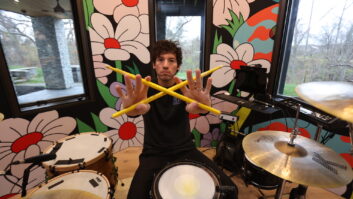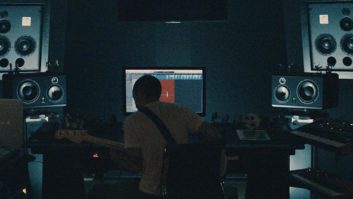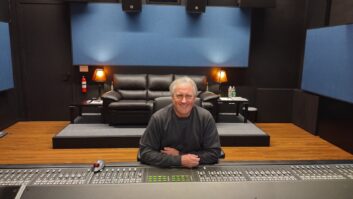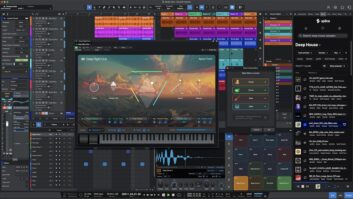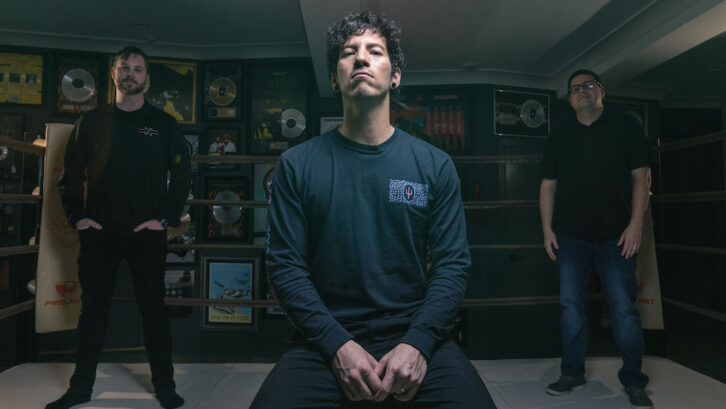
Columbus, OH (August 1, 2023)—The Boom Boom Room—Twenty One Pilots drummer Josh Dun’s studio at his new house in Columbus, Ohio—is a visual treat. The bold aesthetic comes from Dun and his wife, actress, singer and voice artist Debby Ryan, whose quirky and eclectic taste is on display throughout their home.
While fitting in with the home’s overall aesthetic, the studio has been primarily designed as a space where Dun can practice and record his drums, both for band projects and his collaborations with other artists. It’s also set up to accommodate visiting musicians and for Ryan to record voiceovers, ADR for film and television, and her podcast.
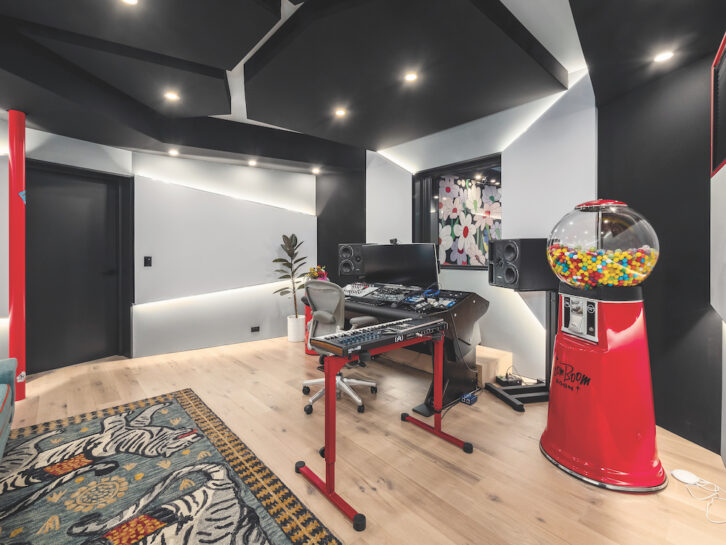
If you are unfamiliar with Twenty One Pilots, well, where have you been? Since breaking into the mainstream in 2015 with their fourth studio album, Blurryface, the Grammy-winning twosome—drummer Dun and lead vocalist and multi-instrumentalist Tyler Joseph—have been flying high. In early 2018, Blurryface became the first album in the digital era to achieve RIAA gold, platinum or multi-platinum status for each of the 14 songs. One year later, the album’s 12-song predecessor, 2013’s Vessel, repeated the feat, making the duo the first artists in history to have every song from two separate albums certified at least gold by the RIAA.
The next full-length, 2018’s Trench, became Twenty One Pilots’ third consecutive platinum-certified album, cementing their success. Then along came Covid-19, and the hard-touring duo was suddenly grounded. Their most recent album, the low-key Scaled and Icy (a play on “scaled back and isolated”), was written and largely produced by Joseph at home in Columbus during the pandemic, while Dun, in a first for the drummer, engineered his contributions in the studio at his and Ryan’s house in Los Angeles.
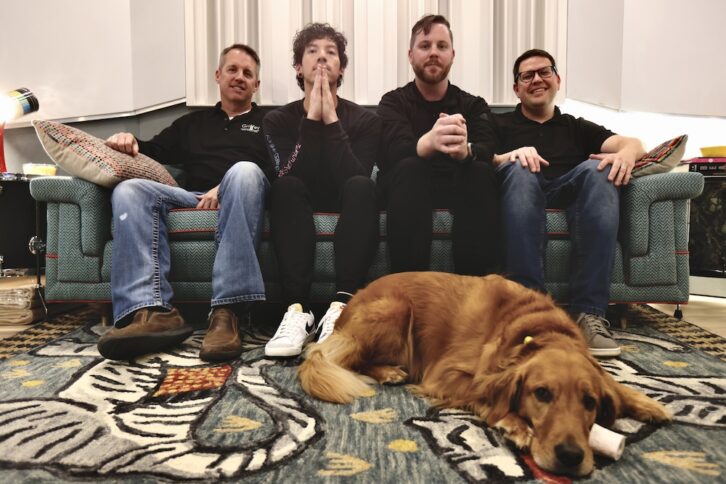
Which brings us back to the Boom Boom Room. After seven years in L.A., Dun and Ryan made the decision to buy a house in Dun’s hometown of Columbus, where Joseph was also born and still lives. “Josh called me and said, ‘Hey, I just bought a house in Columbus. We should build a studio,’” recalls TJ Bechill, co-founder/senior technician with NEAT Audio.
GETTING THE BAND TOGETHER
Bechill goes way back with Twenty One Pilots. In 2012, working as a studio-focused senior sales engineer at Sweetwater Sound in the artist relations division, he saw the band on television, tracked down their FOH engineer and introduced himself. To cut a long story short, the relationship snowballed, eventually leading Bechill to set up NEAT (Next Era Audio Technologies), which specializes in redundant live playback rigs. “By the time I left Sweetwater in 2018, I had over 300 national tours that I was either selling or building rigs for,” he reports.
Along the way, Bechill, who also works for Fender, has held a variety of touring and technical positions with the band, has equipped and managed two studio build-outs for Joseph, and supplied all the gear for Dun’s L.A. studio. As a result, when Dun got in touch about building a facility at his house in Columbus, Bechill knew just who to call first—Indiana-based acoustical consultant Gavin Haverstick of Haverstick Designs, who designed both of Joseph’s studios, one in a basement, one in a sunroom.
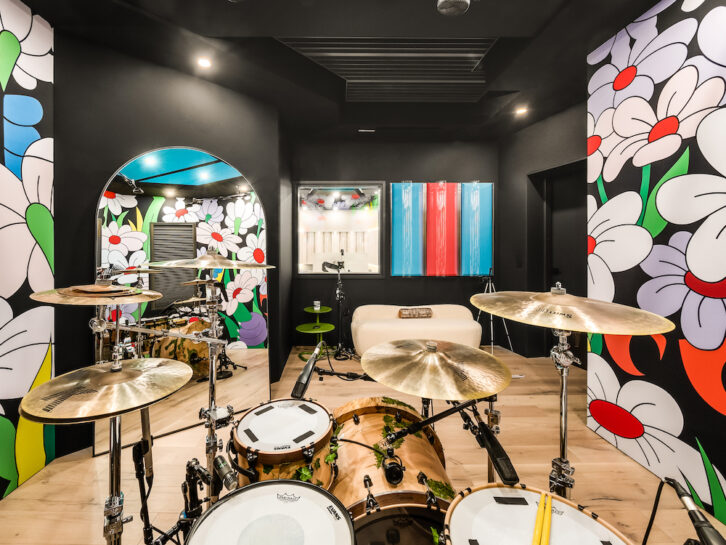
Haverstick recalls walking through the prospective new house with the couple: “I’m in Indianapolis, so I drove over to tour the house with Josh and Debby. They were wondering if the place would work. Luckily, there was a ready-made spot for the studio in the basement.”
You’ve probably seen rooms designed by Haverstick, perhaps without realizing it. He’s built any number of facilities for commercial, educational and HOW clients, as well as musicians such as Tori Kelly, Polyphia’s Tim Henson, Brooklyn Duo, David Crowder and Luca Pretolesi (Studio DMI). However, unlike some acoustic architects, he doesn’t follow a template or impose his aesthetic on his clients. “We love the fact that all of our rooms look different, because every one of our clients is different,” he says. “We create rooms that inspire; that’s our mission statement.”
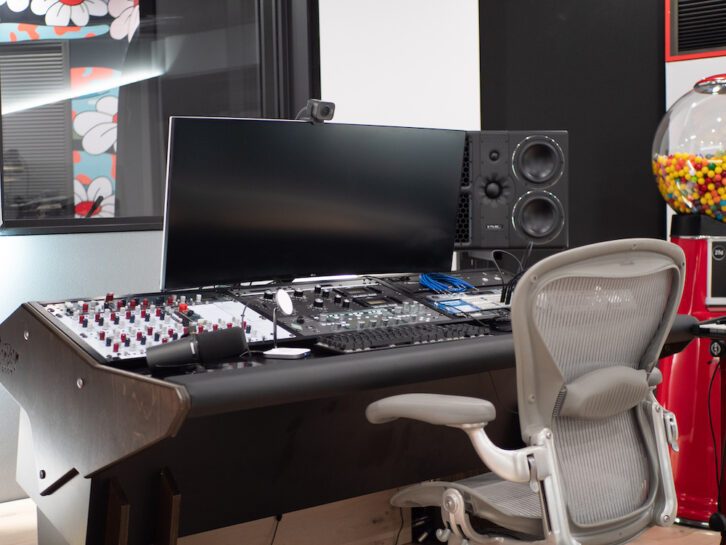
It follows that one of the first things Haverstick does is find out what inspires his client. “Josh would share Instagram posts with me and say, ‘I like this aspect of this studio,’ or, ‘Do you think we could do the lights like this?’” he says. “The cool part about working with Josh and Debby was that their whole house is unique, kind of out there and quirky. It was fun, because any idea that I had, I knew it wasn’t going to be too over-the-top.”
The walk-out basement space was previously a children’s playroom. To create a control room, Haverstick extended the space and canted out the walls for acoustical purposes. “It’s just nice to have a bigger control room, plus it helps with the low-frequency response,” he says.
Live Sound Showcase: Twenty One Pilots
The geometry of the control room’s black and gray wall treatments creates the illusion of a larger space. Lines draw the eye to the studio glass and the live room beyond, where a wall of vibrant flowers, the work of Australian husband-and-wife visual artists DABSMYLA, present a colorful backdrop. Haverstick was inspired by the DABSMYLA mural in the high-ceilinged sunroom directly above the roughly octagonal-shaped tracking space.
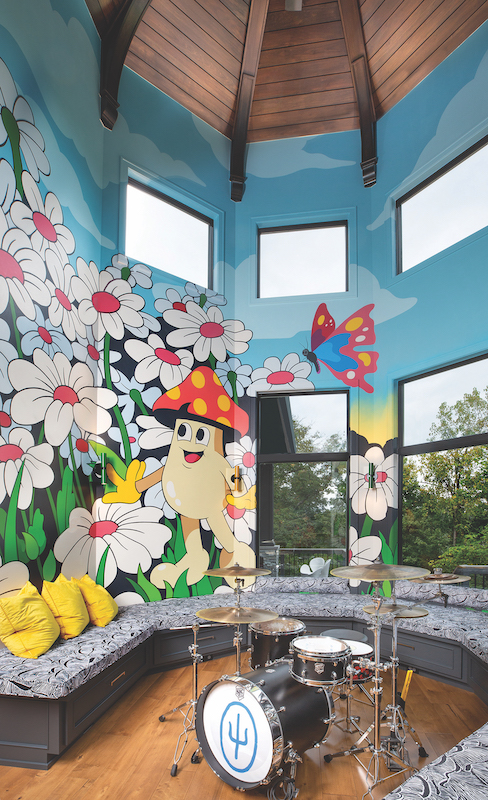
“I said, ‘Give me 10 extra feet of that image and we can put that on the walls.’ They loved it, and it became a signature part of the live room,” Haverstick says. Matthew Call of Simplified Acoustics handled all the fabric and interior acoustical treatments.
The Boom Boom Room was general contractor Charlie Griffey of Griffey Remodeling’s first recording studio job. Haverstick says Griffey was a joy to work with during the project, which took about a year from start to finish: “Charlie was awesome. He likes to learn, so he would even show up when he didn’t need to be there because he was genuinely curious about how things were going. He took a lot of pride in what he did, and he just nailed it.”
